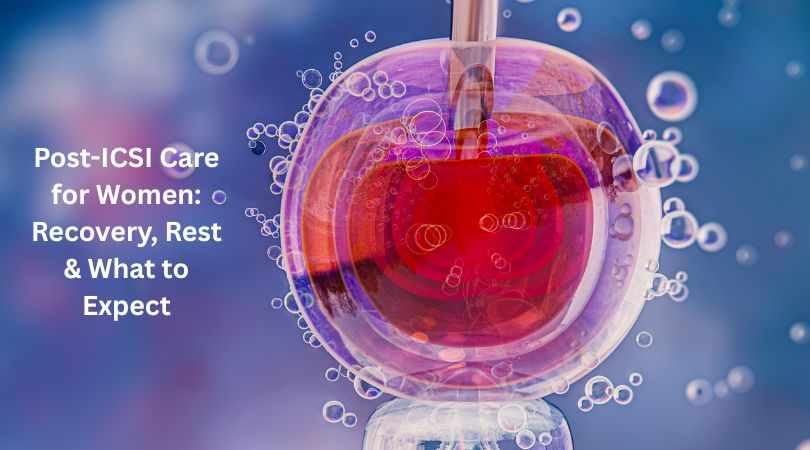
For most parents-to-be in India, pregnancy is a lovely mix of sentiments, expectations, and curiosity. One of the first things that most expectant mothers want to know is: "What is going on inside me every week?" Knowing fetal development week by week not only strengthens the bond between mother and infant but also prepares one physically and emotionally for what lies ahead.
Whether you got pregnant naturally or through assistance from the finest fertility centre, understanding what is taking place within your womb can make your pregnancy experience an even more connected and informed one.
Weeks 1–4: The Foundation is Laid
The menstrual cycle and ovulation occur during the first two weeks, although they are still considered to be part of pregnancy. Around week 3, fertilisation typically takes place. By week 4, the fertilised egg implants itself into the uterine lining, marking the start of pregnancy.
At this point, the embryo is just a tiny group of cells, but it’s already busy forming the building blocks for the baby’s brain, spinal cord, and heart.
Weeks 5–8: Heartbeat and Initial Features
By week 5, most women start feeling early signs of pregnancy such as nausea, tiredness, and missed periods.
By week 6, a very weak heartbeat can sometimes be detected through an ultrasound. The embryo begins developing tiny limb buds, eyes, and a neural tube. Towards the end of week 8, the baby appears more human with the formation of rudimentary ears, arms, and legs.
This is typically the time when women who got pregnant via fertility procedures like Dr. Aravind's IVF Fertility & Pregnancy Centre go for preliminary scans and monitoring.
Weeks 9–12: The First Trimester Concludes
Now referred to as a fetus, the infant is approximately 5–6 cm in length. Major organs such as the brain, liver, and kidneys develop quickly. Features of the face become more defined, and tiny movements can start, although the mother does not yet feel them.
By the 12th week's end, the danger of miscarriage decreases, and most couples inform their relatives.
Weeks 13–16: Second Trimester Begins
Pregnancy becomes more apparent when the uterus moves above the pelvic bone. The infant grows quickly and reaches a length of about 10 cm. Skin and hair follicles start to develop. The parents even get to know the sex of the baby during normal scans (according to legal and ethical standards in India, this is not revealed).
This is also the time when most mothers start prenatal yoga, guided walks, and nutrition plans recommended by their fertility clinic to ensure a healthy pregnancy.
Weeks 17–20: Movement and Connection
By week 18, most mothers experience the first sensations of movement – described as gas bubbles or butterflies in the tummy. The baby's heartbeat is loud enough to be heard with a stethoscope, and it can detect sounds from the outside world.
A mid-pregnancy scan (referred to as the anomaly scan) is also typically performed during week 20, monitoring detailed fetal development. Dr. Aravind's IVF Centre has the latest scanning equipment to make sure that all is going well.
Weeks 21–24: Weight Gain and Getting Stronger
The baby's lungs and taste buds begin development. The baby starts to react to sounds and develops eyebrows and eyelashes. Although still young, the infant has a chance of surviving outside the uterus with careful care by about 24 weeks.
Weeks 25–28: Gradual Growth and Sleep Patterns
The baby is approximately 1 kg now. They open their eyes and react more actively to the voice and touch of their mother. The brain goes on developing, and sleep-wake cycles start establishing.
Mothers should monitor fetal movements and visit routine antenatal appointments at their most preferred fertility clinic or hospital.
Weeks 29–32: Third Trimester Begins
The lungs and bones of the fetus are now completely formed. Their kicks might feel more forceful, and you might even notice your belly wobble with movement.
This is also when some women first start feeling Braxton Hicks contractions – a dry run for the actual thing.
Weeks 33–36: Positioning
The baby starts to get into head-down position in readiness for birth. Fat layers develop beneath the skin, and the immune system grows stronger.
Expectant mothers are generally told to take it easy, eat well, and get plenty of rest.
Weeks 37–40: Waiting for Arrival
Your baby is full-term from week 37. At this time, all organs are formed, and the baby is simply adding fat and preparing to arrive.
Labour could start at any time, and it's important to stay in touch with your fertility or maternity care provider. Facilities like Dr. Aravind’s IVF Fertility Centres guide couples with round-the-clock care, birthing plans, and postnatal support.
Pregnancy is a process of wonder. From a collection of cells to a whole, healthy baby, fetal development is miraculous. If you're just starting out or already into your third trimester, being knowledgeable gives you the power to make your own best decisions for you and your baby.
To trusted care and care-giving, couples opt for the finest fertility centre in town—such as Dr. Aravind's IVF Fertility & Pregnancy Centre, renowned for its marriage of clinical expertise with a very warm, human approach.



Write a comment ...